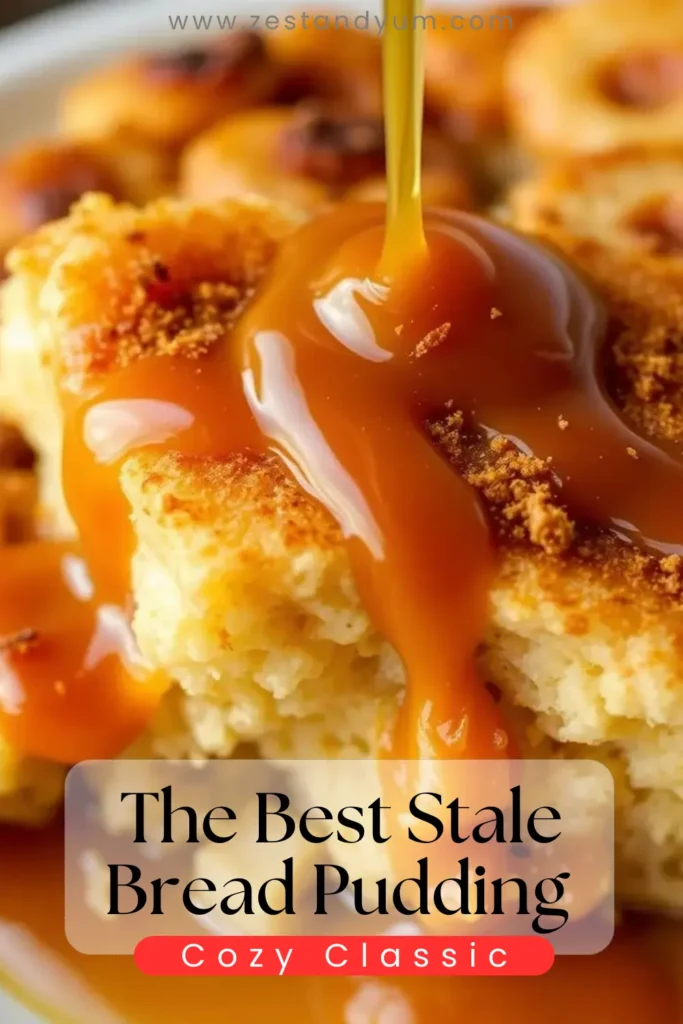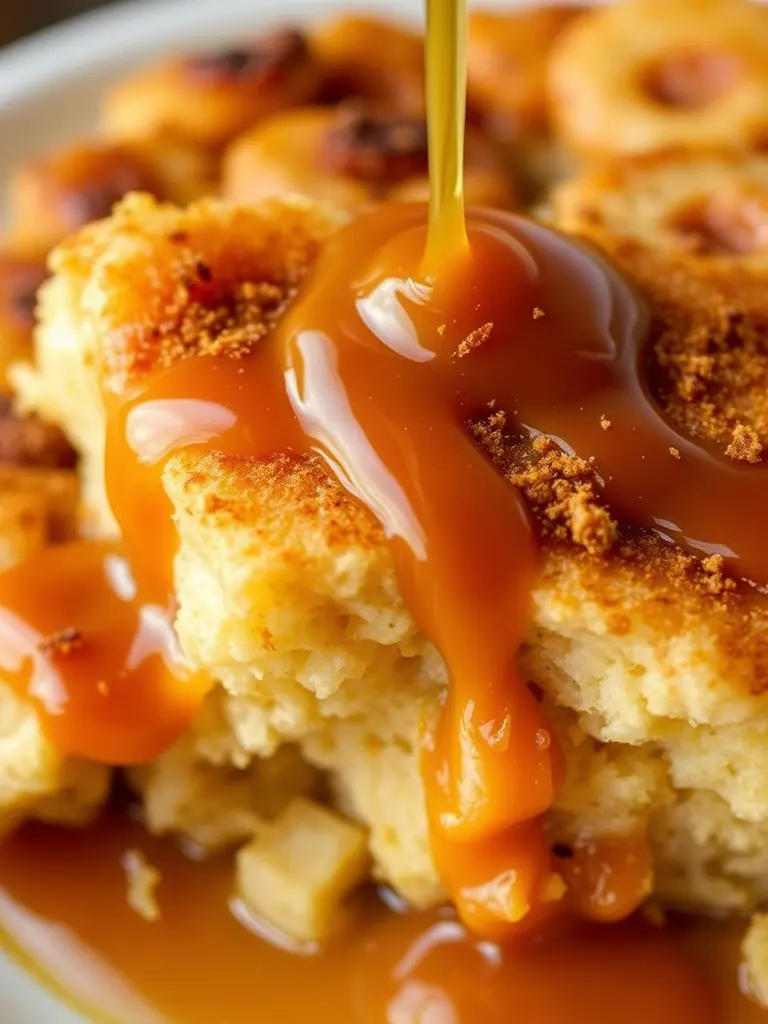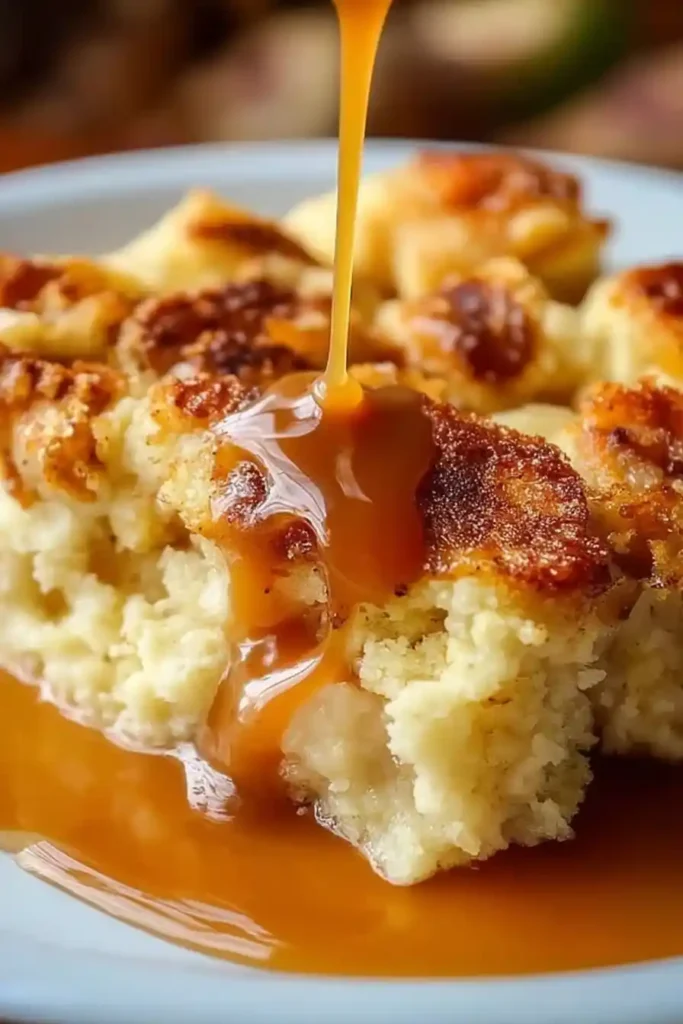What is Stale Bread Pudding?
Stale bread pudding is more than just a dessert; it’s a celebration of resourcefulness and creativity in the kitchen. At its core, this bread-based dessert transforms what might otherwise be considered waste into a luxurious treat that satisfies both sweet cravings and environmental consciousness. The origins of stale bread pudding trace back centuries, where frugality dictated culinary practices. In those days, nothing went to waste not even day-old bread and thus, one of history’s most comforting dishes was born.
This classic comfort dish has stood the test of time because it offers something for everyone. Whether you’re looking for a warm dessert after dinner or simply craving a nostalgic bite, stale bread pudding delivers. Its versatility lies not only in its ingredients but also in its ability to adapt to modern tastes while staying true to its roots as a humble yet satisfying creation.
The Versatility of Stale Bread in Cooking
Beyond stale bread pudding, there are countless ways to repurpose leftover bread. From transforming it into golden breadcrumbs for coating meats to crafting crunchy croutons for salads, stale bread proves its worth far beyond its initial shelf life. This adaptability makes it an essential ingredient in any kitchen aiming to reduce food waste.
Using stale bread instead of fresh comes with nutritional benefits too. As bread ages, its natural sugars caramelize slightly, enhancing flavor profiles without adding extra calories. Additionally, stale bread often contains fewer moisture levels, making it ideal for absorbing liquids and flavors during cooking processes a key characteristic for achieving rich textures in dishes like puddings.
From an environmental perspective, reusing stale bread aligns perfectly with sustainable cooking principles. By minimizing kitchen waste, we contribute positively to our planet while enjoying delicious meals at the same time.
Key Ingredients for Making Stale Bread Pudding
To create the ultimate stale bread pudding, you’ll need some fundamental ingredients. Start with your primary base: stale bread. Choose a dense loaf such as brioche or challah for optimal results. Next, gather dairy components including milk or cream and eggs they form the custard-like mixture that binds everything together. Sweetness is achieved through sugar, while spices like cinnamon and nutmeg add warmth and depth to the flavor profile.
For added excitement, consider optional mix-ins such as dried fruits (raisins, cranberries), chocolate chips, chopped nuts, or a splash of alcohol like rum or bourbon. These extras elevate the pudding from simple to spectacular. If catering to specific dietary needs, don’t worry there are plenty of substitutes available. For instance, almond milk or coconut cream can replace traditional dairy for a dairy-free version, while gluten-free bread ensures accessibility for all eaters.
Healthy baking swaps, such as using maple syrup or honey instead of refined sugar, further enhance the nutritional value of this already versatile dessert. With these ingredients in hand, you’re ready to dive into the art of stale bread pudding preparation.
Step-by-Step Guide to Preparing Stale Bread Pudding
Begin by tearing your stale bread into bite-sized pieces. Place them in a large bowl and pour over enough milk or cream to fully submerge the bread. Allow the bread to soak for about 10 minutes until softened but still holding its shape. This step ensures each piece absorbs maximum moisture, creating a decadent texture when baked.
In another bowl, whisk together eggs, sugar, vanilla extract, and a pinch of salt. Once combined, stir in your soaked bread along with any optional add-ins like dried fruits or chocolate chips. Mix gently to ensure even distribution of flavors throughout the pudding.
Transfer the mixture to a greased baking dish and smooth out the top. Bake in a preheated oven at 350°F (175°C) for approximately 40–45 minutes, or until the edges turn golden brown and the center feels set. To achieve the perfect texture soft inside with a crispy top consider sprinkling a light dusting of sugar over the surface before baking. This technique caramelizes beautifully under heat, adding an irresistible crunch.
Remember, baking tips for beginners emphasize patience and precision. Keep an eye on your pudding as it cooks, adjusting cooking times if necessary based on your oven’s performance. With these easy homemade dessert techniques, anyone can master the art of stale bread pudding with confidence.
Creative Variations of Stale Bread Pudding Recipes
While the classic version of stale bread pudding is undeniably delightful, exploring creative variations opens up a world of possibilities. For those who prefer savory over sweet, cheese and herb-infused bread pudding offers an exciting alternative. Incorporating ingredients like grated cheddar, fresh thyme, or roasted garlic transforms this dessert into a comforting main course.
Regional twists highlight the diversity of international bread recipes. French Pain Perdu, often referred to as “lost bread,” features slices dipped in egg batter and pan-fried until golden. Meanwhile, British Bread and Butter Pudding layers buttered bread with raisins and spices before baking for a richer, more indulgent experience. Seasonal variations also cater to specific times of year; pumpkin spice breathes life into fall-themed desserts, while summer berries infuse vibrant colors and flavors perfect for warm weather gatherings.
Unique bread pudding ideas extend beyond flavor profiles. Experimenting with textures such as adding crunchy pecans or caramelized onions or incorporating unexpected ingredients like lavender or rosewater can elevate your dish to gourmet status. Whether you’re celebrating holidays or simply enjoying everyday meals, these adaptations ensure stale bread pudding remains endlessly fascinating.
Serving Suggestions and Pairings
To enhance your stale bread pudding, consider pairing it with complementary sauces and toppings. Drizzle warm caramel sauce across the top for a decadent finish, or serve alongside a dollop of freshly whipped cream for added lightness. Ice cream provides another excellent option, particularly vanilla or rum-flavored varieties that echo the pudding’s inherent sweetness.
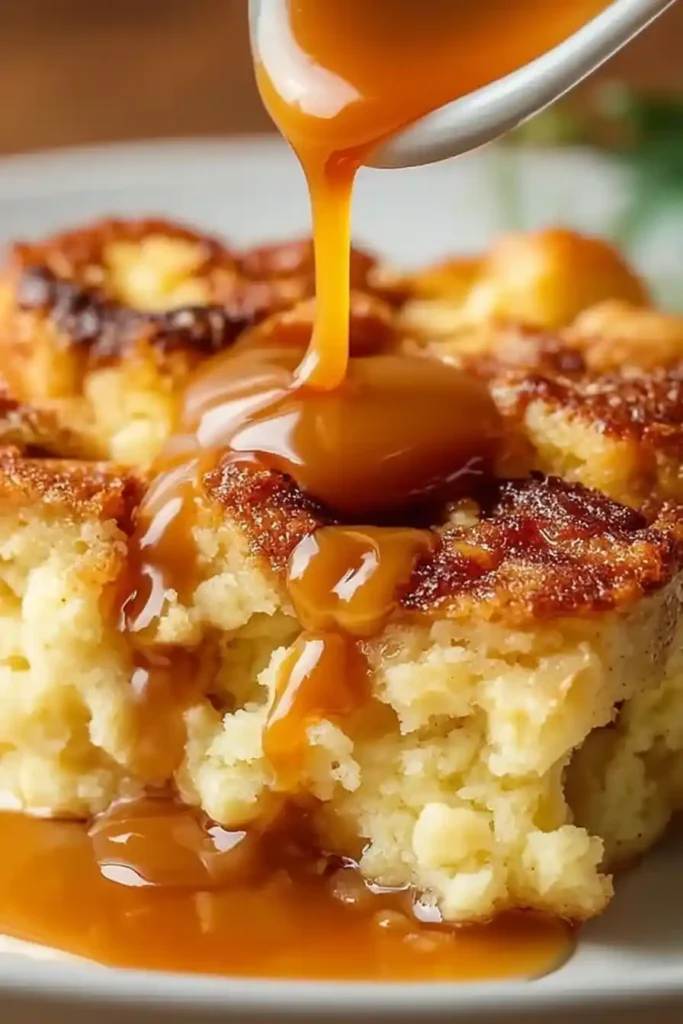
When selecting beverages, rich red wines such as Merlot or Zinfandel beautifully balance the dessert’s creamy elements. Alternatively, tea enthusiasts may appreciate a cup of spiced chai or Earl Grey to cleanse the palate between bites. For special occasions, focus on dessert plating techniques by arranging slices artistically and garnishing with mint leaves or powdered sugar.
Gourmet dessert pairings emphasize elegance without overwhelming the star ingredient. These thoughtful touches make stale bread pudding shine whether served casually or presented formally at gatherings.
Health Benefits and Nutritional Information
A typical serving of stale bread pudding contains approximately 300-400 calories, depending on portion size and add-ins. Macronutrients include carbohydrates from bread and sugar, fats derived from dairy or nuts, and proteins contributed by eggs. To create healthier versions, substitute refined sugar with natural alternatives like honey or maple syrup and reduce overall portions.
Mindful eating encourages savoring each bite rather than consuming excessive amounts. By focusing on quality ingredients and controlling serving sizes, you can enjoy this treat guilt-free. Addressing concerns about sugar content involves balancing sweetness levels through experimentation with extracts or fruit juices instead of pure sugar.
See Also:
FAQs About Stale Bread Pudding
Can I use any type of bread for bread pudding? Absolutely! However, denser loaves like brioche or challah yield superior results due to their ability to absorb liquid effectively.
How do I prevent my bread pudding from being soggy? Drying out the bread beforehand ensures proper texture. Avoid over-soaking and bake slightly longer if necessary.
Is bread pudding suitable for vegans? Yes, provided you replace traditional ingredients with plant-based substitutes like almond milk and flaxseed “eggs.”
Can stale bread pudding be frozen? Certainly! Freeze individual portions in airtight containers and reheat gently when ready to serve.
What’s the difference between bread pudding and stuffing? While both involve stale bread, stuffing typically includes savory herbs and vegetables, whereas pudding leans toward sweet flavors.
Cultural Significance and Modern Popularity
Throughout history, stale bread pudding has played significant roles in various cultures. Originating as a means to repurpose leftover bread, it evolved into cherished family traditions worldwide. Today, its resurgence aligns closely with sustainability trends promoting eco-conscious dining practices.
Chefs globally have embraced this timeless recipe, introducing innovative spins that captivate modern palates. Celebrity chefs frequently feature bread pudding on menus, highlighting its adaptability and appeal. From farm-to-table establishments to high-end restaurants, this humble dessert continues inspiring culinary creativity.
Celebrating Stale Bread Pudding as a Timeless Dish
As we’ve explored, stale bread pudding stands out as a versatile, comforting, and environmentally friendly dessert. Its enduring popularity stems from its ability to bring people together while encouraging resourcefulness in kitchens everywhere. By experimenting with new flavors, techniques, and presentation styles, cooks can personalize this classic recipe according to preference.
Incorporating stale bread pudding into your repertoire not only celebrates tradition but also fosters creativity and sustainability. Embrace the joy of transforming simple ingredients into extraordinary experiences and let your imagination guide the way forward in zero-waste living.
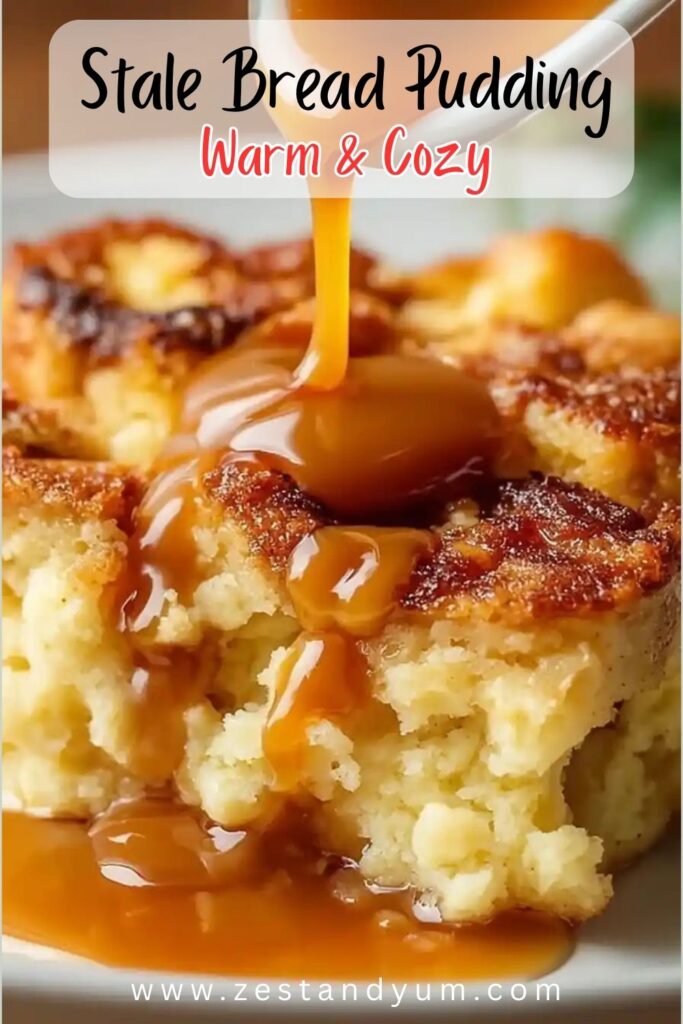
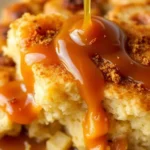
The Best Stale Bread Pudding Recipe
- Total Time: 1 hour
- Yield: 6–8 servings 1x
- Diet: Vegetarian
Description
A timeless and comforting dessert that transforms stale bread into a rich, custardy treat. Perfect for reducing kitchen waste while indulging your sweet tooth with warm spices, creamy custard, and creative mix-ins.
Ingredients
- 4 cups stale bread, torn into bite-sized pieces (preferably brioche or challah)
- 2 cups milk or cream
- 2–3 large eggs
- ½ cup sugar (or maple syrup/honey as a substitute)
- 1 tsp vanilla extract
- ½ tsp ground cinnamon
- ¼ tsp ground nutmeg
- Pinch of salt
- Optional mix-ins:
- ½ cup dried fruits (e.g. raisins, cranberries)
- ½ cup chocolate chips
- ¼ cup chopped nuts
- 1–2 tbsp rum or bourbon (optional)
Instructions
- Preheat oven to 350°F (175°C) and grease a baking dish.
- Tear stale bread into bite-sized pieces and place in a large bowl.
- Pour milk or cream over the bread and let soak for 10 minutes.
- In another bowl, whisk together eggs, sugar, vanilla extract, cinnamon, nutmeg, and a pinch of salt.
- Add soaked bread to the egg mixture and stir gently to combine.
- Mix in any optional add-ins (dried fruits, chocolate chips, nuts, etc.).
- Transfer the mixture into the prepared baking dish and smooth the top.
- For a crunchy top, sprinkle a little sugar over the surface.
- Bake for 40–45 minutes or until golden brown on top and set in the center.
- Serve warm with caramel sauce, whipped cream, or ice cream.
Notes
- Use denser breads like brioche or challah for best texture.
- For dairy-free, use almond milk or coconut cream.
- For vegan version, use plant-based milk and flax eggs.
- Bread pudding can be frozen in portions and reheated.
- Try savory variations with cheese, herbs, or vegetables.
- Prep Time: 15 minutes
- Cook Time: 45 minutes
- Category: Dessert
- Method: Baking
- Cuisine: Comfort Food
Nutrition
- Serving Size: 1 slice
- Calories: 350
- Sugar: 18g
- Sodium: 180mg
- Fat: 15g
- Saturated Fat: 8g
- Unsaturated Fat: 6g
- Trans Fat: 0g
- Carbohydrates: 45g
- Fiber: 2g
- Protein: 7g
- Cholesterol: 90mg
